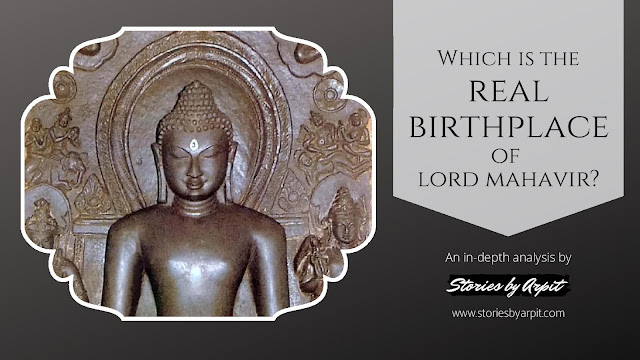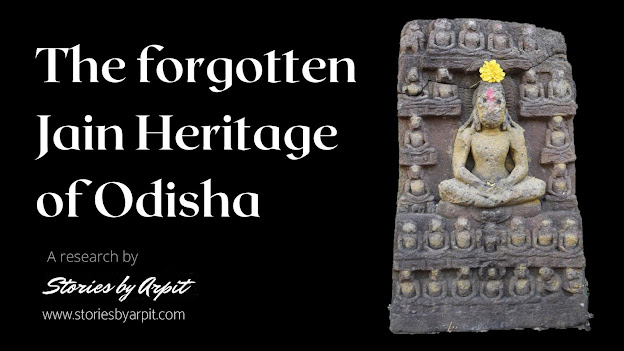Tracing the Timeless: A historical journey of Shri Navkar Mantra
 |
Shri Namaskar Mangal Sutra, also known as Namaskar Mantra, Navkar Mantra or Namokar Mantra is the most revered and universally accepted sutra (scripture) in Jainism. Through this sutra, one worships the virtues of Panch Parmeshthi’s (and not any one as an entity), i.e. Arihants (Tirthankars - enlightened ford makers), Siddha’s (liberated souls), Acharya (heads of the Jain Sangh), Upadhyay (ascetic teachers), and all Sadhus including all monks and nuns the universe.
The traditional belief is that this sutra is eternal and encapsulates the essence of all 14 Purvas (i.e. all Jain Agams). While spiritually significant, scholarly attention to the historical and literary development of this Sutra has been limited. This article seeks to bridge that gap by shedding light on literary references and archaeological discoveries that trace the Sutra’s antiquity.
Structure
In the Shwetambar Muripujak tradition, the Namaskar Mangal Sutra consists of 9 sentences. The first five sentences provide obeisance to the above five worshipful personalities and the remaining four sentences (also known as ‘Chulika’) explain the importance of these obeisance as below.
Hindi
नमो अरिहंताणं
नमो सिद्धाणं
नमो आयरियाणं
नमो उवज्झायाणं
नमो लोए सव्व साहूणं
एसो पंच नमुक्कारो
सव्व पाव प्पणासणो
मंगलाणं च सव्वेसिं
पढमं हवइ मंगलं
English (with Diacritical marks for correct pronunciation)
Namo Arihantāṇaṁ
Namo Siddhāṇaṁ
Namo Ayariyāṇaṁ
Namo Uvajjhāyāṇaṁ
Namo Lōē Savva Sāhūṇaṁ
Ēsō pan̄ca ṇamukkārō
Savva pāvappaṇāsaṇō
Maṅgalā ṇaṁ ca savvēsiṁ
Paḍhamama havaī maṅgalaṁ
However, the Shwetambar Sthanakvasi & Terapanthi subsects do not include the four sentences of Chulika in the sutra. In the Digambar tradition, the word namo (नमो) is replaced by ṇamo (णमो). While the Shwetambar tradition state that the sermons of the Tirthankars are in Ardhamagadhi (an ancient language belonging to the Prakrit family which includes 18 local dialects of Magadh region), therefore they prefer the version with Namo (नमो ) as they consider it to be the original form of the Sutra. Digambar tradition, on the other hand, believe that Tirthankaras do not speak after attaining Kevalgyan and that there is no specific language in their sermons. Digambars, therefore, recite the newer version of the Sutra in Maharashtri Prakrit with ṇamo (णमो).
A. Literary evidences (Chronological)
1. Shri Bhagvati Sutra: The earliest reference of Shri Namaskar Mangal Sutra appears as the auspicious opening verse of the 5th Ang Agam, Shri Vyakhyapragnapti Sutra (also known as Shri Bhagvati Sutra) composed in the 6th Century BCE[1]. The first five sentences of the sutra revering the Panchparmeshthis are mentioned in the first sutra while the Chulika (i.e. last four sentences) is not present[2]. It is important to note that the word, Arahantāṇam (अरहंताणं) is used instead of Arihantāṇaṁ (अरिहंताणं) signifying the use of traditional Ardhamagadhi.
2. Shri Dashvaikalik Sutra: Shri Dashvaikalik Sutra (one of the four Mool sutras) composed by Arya Shri Shayyambhavsuri in 4th Century BC mentions concluding the Kayotsarg with Namaskar Mangal Sutra and then chanting Jinstava– “नमोक्कारेण पारेत्ता कैरेत्ता जिणसंथवं“[3]. However, it is not clear from the reference whether the Namaskar mangal sutra consisted of first five sentences or nine sentences.
3. Shri Avashyak Sutra: Shri Avashyak Sutra, one of the fundamental Jain texts composed by Gandhars and Shrut Kevali Acharyas (between 6th to 3rd century BCE) also records the first five sentences of the Namaskar Mangal Sutra[4].
4. Shri Avashyak Niryukti Sutra: The Chulika of Namaskar Mangal Sutra is first found in Shri Avashyak Niryukti[5] which is a Prakrit commentary of Shri Avashyak Sutra composed by Shrutkevali Acharya Bhadrabahu Swami in 3rd Century BCE or Acharya Bhadrabahu II in 6th Century CE.
5. Shri Pannavana Sutra: Another reference of first five sentences of Shri Namaskar Mangal Sutra is found in the Ang Bahya Agam (auxiliary canonical text), Shri Pannavana (Prajnapana) Sutra[6] which was composed by Arya Shyamacharya in 2nd Century BCE (between 227 BCE – 192 BCE)[7].
6. Shri Angavijja Sutra: This text outlines three structural variants. Dvi-padatmaka, i.e. having lines; Tri-padatmaka- with three lines and Pancha padatmaka- having five lines. According to scholars this scripture is compiled by previous Acharyas before the Christian era, as its language is similar to ancient Ardhamagadhi and Shaurseni
a. The Dvi-padatmaka form of Namaskar Mangal Sutra includes:
i. Namo Arihantānam
ii. Namo Siddhānam or Namo Savva Siddhānam.
i. Namo Arihantānam
ii. Namo Siddhānam.
iii. Namo Savva Sāhunam.
c. The Pancha padatmaka form of Namaskar Mangal Sutra includes:
i. Namo Arihantānam
ii. Namo Siddhānam or Namo Savva Siddhānam.
iii. Namo Ayariyāṇaṁ
iv. Namo Uvajjhāyāṇaṁ
v. Namo Lōē Savva Sāhūṇaṁ[8]
7. Shatkhandagam: The first five sentences of Shri Namaskar Mangal Sutra are found in Digambar scripture Shatkhandagam composed by Acharyas Pushpadanta and Bhutbali in 2nd Century CE[9] with an important change – The word namo (नमो) is replaced by ṇamo (णमो). This was due to adoption of Maharashtri Prakrit instead of Ardhamagadhi. Further, the text mentions āiriyāṇaṃ (आइरीयाणम) instead of commonly pronounced ayariyāṇaṁ (आयरियाणं).
8. Mulachar: The complete Namaskar Mangal Sutra with Chulika is found in the Digambar scripture Mulachar[10] composed by Acharya Vattakera in 2nd Century CE. Here also the word namo (नमो) is replaced by ṇamo (णमो).
11. Shri Mahanishith Sutra: It is mentioned in Shri Mahanishith Sutra (restored by Acharya Shri Haribhadra Surishwarji maharaja in 8th century CE) that Panchamangal Mahashrutaskandha was received from Tirthankars and was explained in the Bhashya and Churnis. However, those essays and commentaries were destroyed in the passage of time and Shri Vajraswami (In (1st century CE) restored the complete Namaskar Mangal Sutra[12].
B. Archaeological evidences (Chronological)
1. Hathigumpha Inscription: The earliest available archaeological evidence of Shri Namaskar Mangal Sutra is found from the Hathigumpha Inscription dated to 152 BCE. The 17 line inscription in Prakrit language incised in Brahmi script is carved in a cave called Hathigumpha in Udaygiri hill, near Bhubaneswar in Odisha and was inscribed by the Jain king Mahameghvan Bhikkhurai Kharavel. The first two lines of the inscription mention the following-
नमो अरहंतानं
नमो सवसिधानं
.jpg) |
| The Hathigumpha Inscription (Source: Wikimedia Commons) |
It is pertinent to note that the phonetic used in the Brahmi script is 𑀦𑀫 i.e. Namo – नमो and not ṇamo (णमो) - as न in Brahmi is spelled like 𑀦 and ण in Brahmi is spelled like 𑀡[13]. Also instead of Arihantāṇaṁ (अरिहंताणं) the Ardhamagadhi version is used i.e. Arahantāṇam (अरहंतानं) and Savasidhānam (सवसिधानं) is used instead of Siddhāṇaṁ (सिद्धाणं). (For details, refer the key mentioned at the end of the article in the reference section.)
 |
Hathigumpha inscription as first drawn in "Corpus Inscriptionum Indicarum, Volume I by Alexander Cunningham" in 1827 (Source: Wikimedia Commons) |
2. Lohagad Cave Inscription: In September 2019 an inscription in Brahmi script in Prakrit language dating back to the 1st or 2nd century BCE was discovered by team of trekkers in the 7th cave on the cliff of Lohagad, situated 52 km from Pune, Maharashtra[14]. The inscription starts with the first sentence of Namaskar Mangal Sutra and mentions Namo Arahantāṇam (नमो अरहंतानं) exactly similar to the Hathigumpha cave inscription and not Namo Arihantāṇaṁ (नमो अरिहंताणं) as currently spoken/ written today. Also, like the Hathigumpha inscription, the phonetic used in Brahmi script is namo (नमो) and not ṇamo (णमो)[15]
 |
| Lohagad Cave inscription (Source: Research Paper, Ancient Asia, Shrikant Pradhan, Abhinav Kurkute and Vivek Kale) |
3. Pale Cave Inscription: Situated about 60km north-west of Pune near Pale village in Maharashtra, an inscription was discovered in 1960 and deciphered in 1969 which starts with the first sentence of Namaskar Mangal Sutra. Based on the results of palaeographical analysis of the letters in the inscription, it was concluded that the inscription was most likely carved in the 1st century BCE. Like the Lohagad cave inscription, it starts with the words, Namo Arahantāṇam (नमो अरहंतानं)[16].
 |
| Pale Cave Inscription (Source: Wikimedia Commons) |
4. Kankali Tila Inscriptions: Among various Ayagapattas and remains of lintels found before and during Kusana Era (1st Century BCE to 4th Century CE), the inscriptions on them, only mention Namo Arahantāṇam (नमो अरहंतानं)[17]
 |
| Ayagapatta of Simhanadika, from Kankali Tila Stupa, Mathura, dated to 50 CE, with Namo Arahaṁtānaṁ (नमो अरहंतानं) mentioned in the inscription (Source: Wikimedia Commons) |
Conclusion
The Namaskar Mangal Sutra stands not only as the most revered sutra in Jainism but also as a timeless spiritual composition whose roots run deep into ancient history. While Jain tradition reveres this mantra as eternal and all-encompassing, early scriptural and archaeological evidence confirms its use as far back as the 6th Century BCE (2nd century BCE for archaeological evidences), validating its prominence through time.
Significantly, these early records—such as Shri Bhagvati Sutra, Shri Avashyak Sutra (along with its niryukti), Shri Pannavana Sutra among others, the Hathigumpha, Lohagad, Pale and Kankali Tila inscriptions—consistently use the phonetic form namo (नमो) rather than ṇamo (णमो), pointing to its origin in Ardhamagadhi, the classical Jain Prakrit. Over time, as linguistic traditions evolved and Jain scriptures began adopting Maharashtri Prakrit and Shaurseni, a subtle yet notable shift occurred in pronunciation and spelling—namo (नमो) became ṇamo (णमो), and other terms also adapted to regional phonetic structures. These linguistic transitions also explain the sectarian differences in the recitation with the Digambar texts.
By tracing these scriptural references and archaeological markers, this article brings clarity to common misconceptions and celebrates the rich linguistic, cultural, and spiritual journey of the Namaskar Mangal Sutra. It is a timeless invocation, shaped by centuries, yet untouched in essence—eternal in faith, and now, affirmed by history.
 |
| Brahmi Letters Key in Hindi |
[1]In regard to the authorship and date of Shri Vyakhyapragnapti Sutra (including all the Ang Agams), the Jain tradition states that after the Moksh of Prabhu Shri Mahavir, Gandhar Shri Sudharma Swami led the Sangh and it was Shri Sudharma Swami who transmitted the sacred instructions of the Ang Agams to Shri Jambu Swami. Therefore, the Ang Agams can be dated to 6th Century BCE.
[2] Bhagvati/ Vyakhyapragnapti -1 Agam Sutra Hindi Anuvad, Agam Diwakar Muni Dipratnasagarji, Pg. 5
[3] Dashvaikalik Sutra, Prakrit Granth Parishad, Pg. 150
[4] Agamdeep, 45 Agam Gurjar Chaaya, Agam 40-45; Muni Dipratnasagarji, Page 11
[5] Nirgranth Aetihasik Lekh Samucchay Part-1, M.A. Dhaky, Pg. 8 & Sagar Jain Vidya Bharti Part 4, Dr. Sagarmal Jain, Pg. 32
[6] Pannavanasuttam, Part 1, Jain Agam Granthmala, Muniraj Punyavijayji, Pt. Dalsukh Malvania, Pt. Amurtlal Mohanlal Bhojak, Pg. 3
[7] Jain Parampara no Itihas Part 1, Muni Shri Darshanvijayji, Muni Shri Gyanvijayji and Muni Shri Nyayvijayji, Pg. 180-181
[8] Jaina Stupa at Mathura: Art and icons, Dr. Renuka Porwal, Pg. 167
[9] https://mlpp.pressbooks.pub/evcphil070/chapter/jainism/
[10] Angvijja aur Namaskar Mantra ki Vikas Yatra, Dr. Sagarmal Jain, Pg. 32
[11] Shri Vishesh Avashyak Bhashya (Hindi Anuvad) – Pratham Khand, Shri Subhadra Muni Maharaj, Pg. 6
[12] Angvijja aur Namaskar Mantra ki Vikas Yatra, Dr. Sagarmal Jain, Pg. 31
[13] Corpus Inscriptionum Indicarum, Volume I: Inscriptions of Asoka by Alexander Cunningham, 1827
[14] https://timesofindia.indiatimes.com/city/pune/jain-inscription-discovered-on-wall-of-rock-cut-cave-at-lohgad-fort/articleshow/71470386.cms
[15] https://kevinstandagephotography.wordpress.com/2021/02/01/lohagadwadi-caves-jain-inscription-lohagad/
[16] https://kevinstandagephotography.wordpress.com/2023/09/25/pale-cave-evidence-of-early-jain-faith-in-maharashtra/
[17] Epigraphia Indica, Vol 1, Vol 2, Vol X










This also means the caves in Maharashtra like the ones in Odisha are of Shwetambar origin🤷🏻♂️
ReplyDeleteGood Article
ReplyDelete